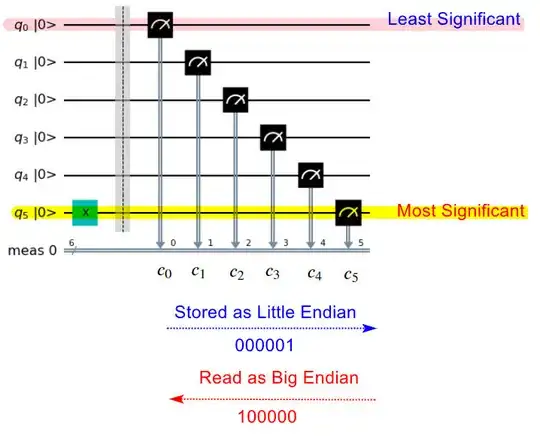I've noticed that Q# favors Little Endian. Meaning that most operations are designed for this type of encoding. Is is it the same with Qiskit?
3 Answers
Qiskit uses little-endian for both classical bit ordering and qubit ordering.
For classical bits:
A 3-bit classical register creg with value abc has creg[0]=c, creg[1]=b, creg[2]=a.
For qubits:
The ordering is with respect to the tensor-product structure of the state space. So a 3-qubit quantum register qreg with wave-function $|\psi\rangle = |A\otimes B\otimes C\rangle = |ABC\rangle$ has qreg[0]$= |C\rangle$, qreg[1]$= |B\rangle$, qreg[2]$= |A\rangle$.
Similarly for representing unitary matrices of a circuit. $U = U_A \otimes U_B \otimes U_C = U_A U_B U_C$ would have $U_C$ acting on qreg[0], $U_B$ acting on qreg[1] and $U_A$ acting on qreg[2].
Edit:
The link provided in the comment by Andreas Burger is outdated. Currently, the bit ordering is explained in the documentation here: https://docs.quantum.ibm.com/guides/bit-ordering
Note that the bits are labelled from right to left. So cr[0] is the one to the furthest right, and so on. As an example of this, here's an 8 qubit circuit with a Pauli X on only the qubit numbered 7, which has its output stored to the bit numbered 7.
- 107
- 3
- 59
- 4
